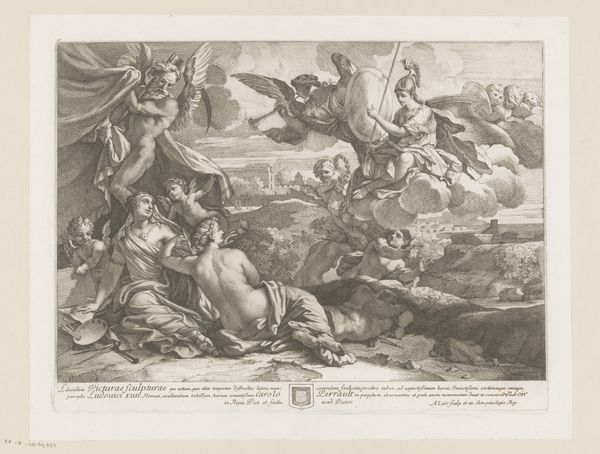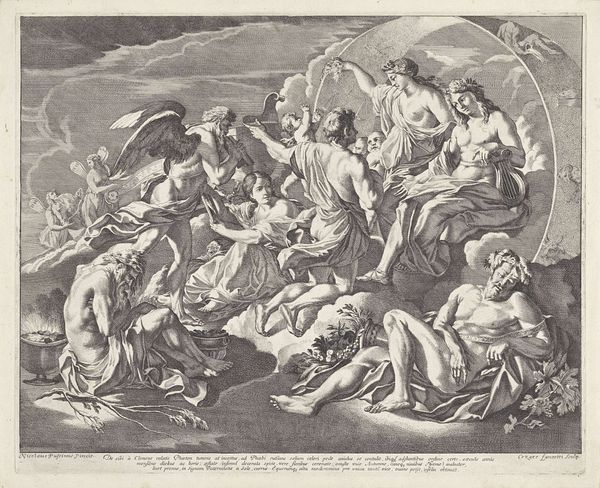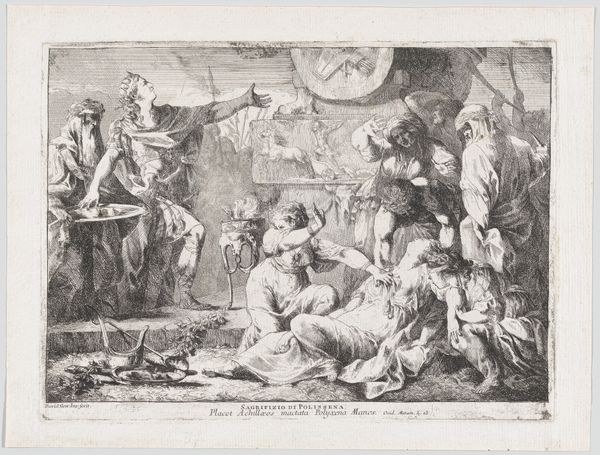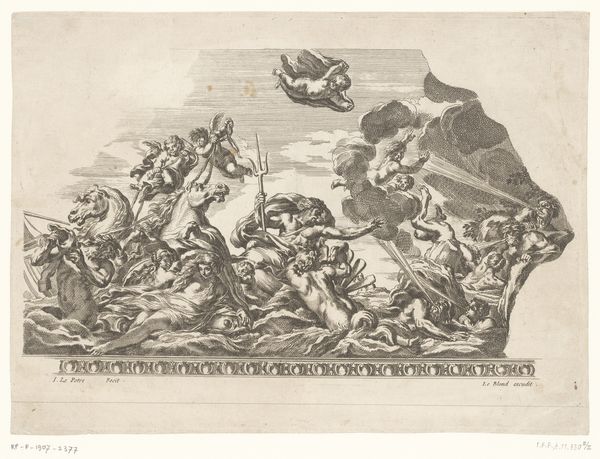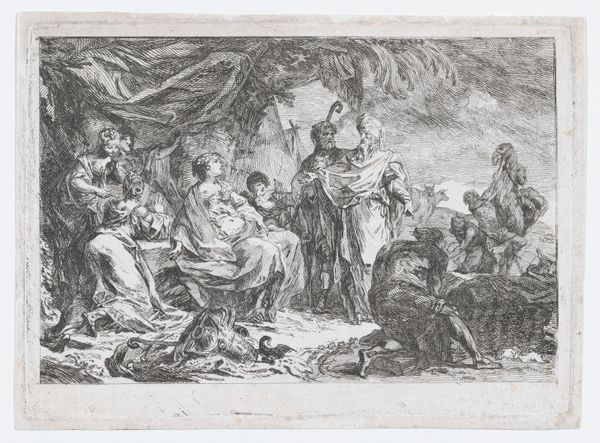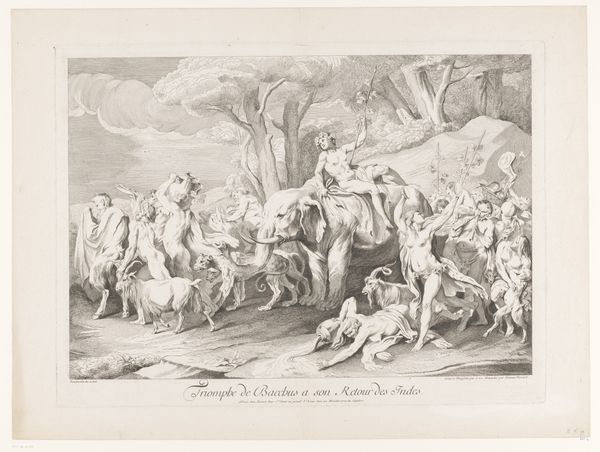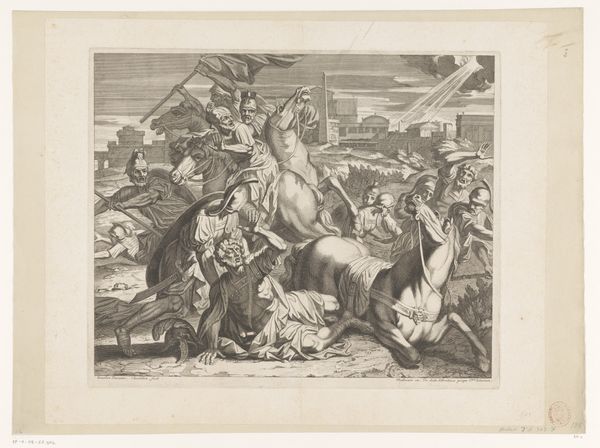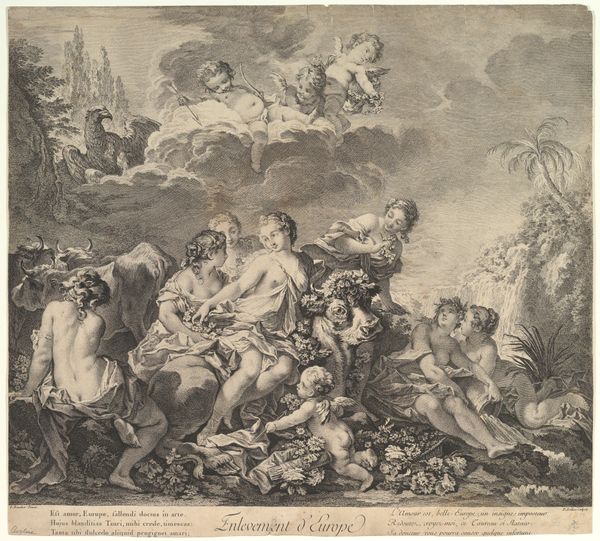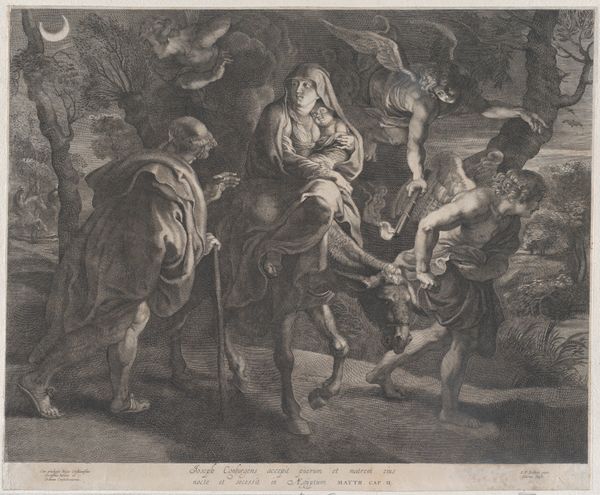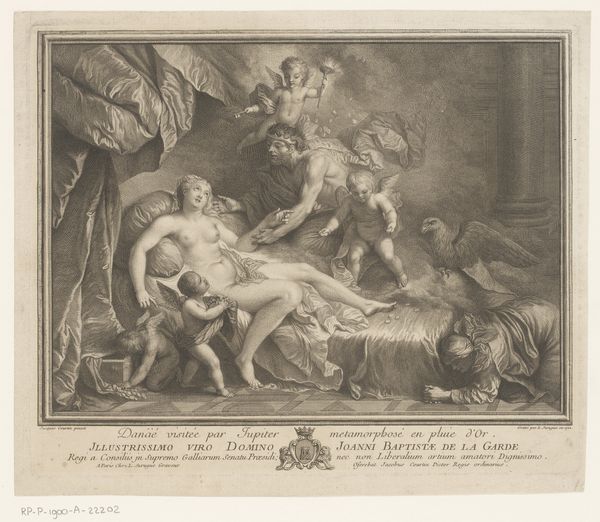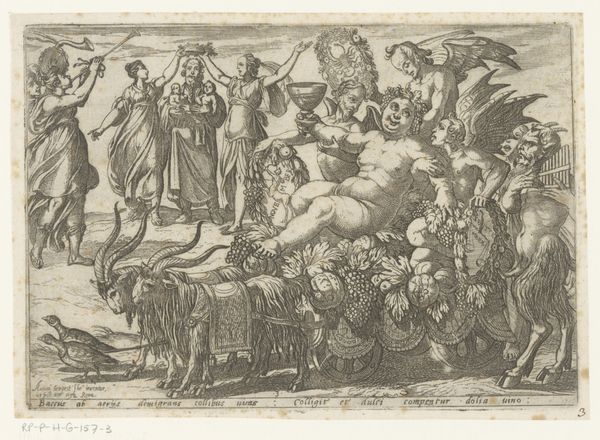
engraving
#
narrative-art
#
baroque
#
old engraving style
#
classical-realism
#
figuration
#
mythology
#
history-painting
#
engraving
Dimensions: height 348 mm, width 439 mm
Copyright: Rijks Museum: Open Domain
Editor: We're looking at Nicolas Perelle's engraving, "Phaeton vraagt Apollo om de zonnewagen," made sometime between 1641 and 1695. It's a stunning depiction of a scene bursting with figures. I’m struck by how Perelle achieved such detail and dynamism using just line and tone. What do you see in this piece? Curator: The formal elements present a masterclass in Baroque composition. Note how the figures are arranged—spiraling upward and outward. The dynamism arises from the interplay of light and shadow, created solely by the varying densities of etched lines. This distribution pulls the viewer's eye continuously across the picture plane, wouldn’t you agree? Editor: Yes, I can definitely see that now, particularly how the different groupings of figures seem to flow into one another, enhancing the sense of motion. How would you relate that to other similar artworks from that era? Curator: Perelle clearly understood the dramatic potential of the Baroque style. It contrasts nicely with Renaissance emphasis on symmetry and stillness. This engraving demonstrates a clear move towards diagonal compositions, heightened emotion, and the illusion of movement. The figures themselves are almost like architectural elements; each is structurally integral to the narrative as a whole. Can you see it? Editor: Yes! Thanks, now that you mention that, the almost architectonic layout, despite the dynamism of the overall presentation, has become obvious. I hadn't previously made the link with this style and architectural form so explicit, but seeing the individual elements of Baroque style now it stands out a mile. I learned a lot today. Curator: Indeed. By studying these lines and tonal gradations, and examining how these structural components build into a grand narrative, one learns to appreciate Perelle's artistic genius anew.
Comments
No comments
Be the first to comment and join the conversation on the ultimate creative platform.
